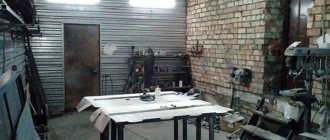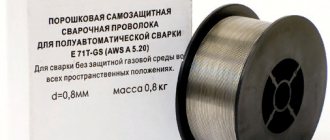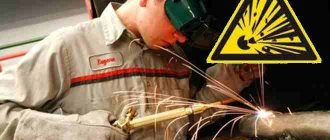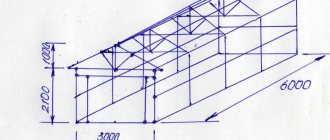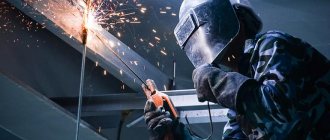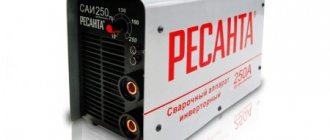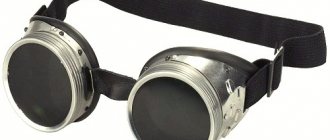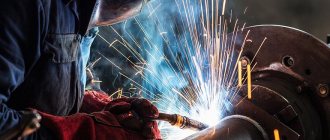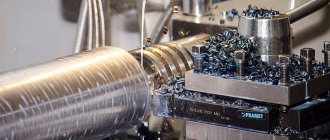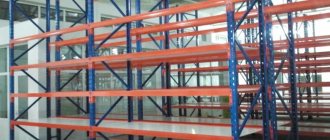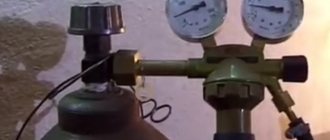The organization of the welding process is understood as a whole complex of procedures, including not only the implementation of welding work, but also the preparatory operations accompanying this. It is necessary to provide workers with consumables, equipment, and take care of their safety.
Welding work must comply with the requirements of regulatory documents, and in some cases the work must be agreed upon with administrative authorities.
Organizational issues
When solving organizational issues, you need to pay attention to the following points:
- technical support with mandatory consideration of the specific features of welding technology;
- competent management of the process at all its stages;
- technical and material support;
- advanced training of personnel with mandatory certification (this is especially true when work at height is expected);
- competent and timely redistribution of available resources, allowing to increase the efficiency of labor costs and create a reserve fund (for such activities as modernization of production, for example).
Many types of welding work are considered dangerous and require a permit for the performer. Also, welding work is classified as construction work, therefore, when an enterprise provides this type of service, a number of permits are required.
Taking into account all the listed requirements, welding activities must be carried out according to a pre-drawn up plan, included in the general economic activities of the enterprise.
Planning and compliance
The design work plan (PWP) is drawn up taking into account pre-approved standards, according to which the so-called “technological maps” are prepared.
Accurate implementation of the instructions contained in them allows you to competently organize the welding process and ensure the solution of the following important tasks:
- technological calculation of the volume of proposed work (preparation of statements of labor and material costs);
- drawing up a general power supply diagram for the enterprise;
- taking into account comments on the technological features of the welding process and its quality control;
- compliance with basic safety requirements (TB) and labor protection standards.
General and technical supervision of welding work is carried out by the chief welder (for large volumes of products or a staff of more than 200 operators).
In other cases, either the leading engineer or the foreman (master) of the welding section is appointed as the responsible person for this part of the production process.
According to the requirements of state standards, this class of installation operations is subject to mandatory regulation, which allows for competent organization of the work process.
Current welding standards (subject to strict adherence to the instructions of the relevant documents) make it possible to increase the current output and quality of the finished product.
The main indicator of standardization is the time spent on manufacturing a structure of a given complexity, which consists of many components.
Based on this time, enterprises establish a production rate per performer, which is an indicator of the average productivity of welding work.
According to the provisions of SNiP concerning the organization of welding operations, this parameter takes into account a number of factors, including the rate of energy consumption, as well as the costs of auxiliary materials and auxiliary tools. In addition, based on the production rate, other calculated indicators of a specific welding operation are determined.
Ventilation system
Ventilation of the welding shop is the most important component and one of the main requirements for organizing welding shops. With its help, heavy gases from the melting of metals and combustion of electrode rod coatings are removed from the welder’s workplace.
Many people make the mistake of installing a probe above a large workbench, which is connected to the general ventilation system by pipes or corrugations. The optimal and effective option is to install a side gas outlet so that they do not rise above the level of the workpieces being welded.
It is very important to make an accurate calculation of the ventilation system to ensure maximum air extraction from each workplace. It is better to install the fan outside the workshop. This will be especially true if the welding shop is organized in a garage.
A small room without ventilation will become a place where it will be impossible to stay without a respirator or gas mask. And the SES will not give permission to operate such a poorly equipped workshop. Therefore, it is very important not only to install a ventilation system, but also to correctly calculate the characteristics of the fan, especially the power of the device .
Plus, distribute the air ducts correctly so that they do not interfere when moving large parts. This means that you will have to make a drawing with the condition of the correct arrangement of all elements of the system.
General procedure for obtaining admission
According to the current standards and provisions of the PUE, before carrying out welding work, it is necessary to issue a work permit signed by the head of the department, and also obtain permission agreed with the fire service.
These documents, drawn up by the responsible executor, stipulate the conditions for carrying out welding activities, the equipment used and the safety measures applied.
The work order specifies a list of persons admitted to current work (team composition), their clearance group and the specific task being performed. Before they begin, the responsible person briefs the team members with a mandatory note about its contents in the accompanying document (work order).
Preparing the site
The welding work itself is carried out at a pre-prepared site, equipped with all the necessary equipment and fire-fighting equipment. If necessary, a welder’s tent is laid out at the work site, made of canvas material and protecting it from bad weather.
Before working with a welding inverter or other welding machine, you should prepare all the necessary auxiliaries (fluxes, solders and other consumables).
It is also necessary to check the integrity of the braid and the adequacy of the length of the supply cables to ensure that it corresponds to the distance from the welding unit to the specific place of work.
To enclose the working area when welding with an open arc in rooms of limited area, a special protective awning or screen in the form of a screen made of non-flammable materials must be used (its height must be at least 1.3 meters).
In open spaces, such barriers are necessary when several operators are working simultaneously close to each other.
Before carrying out welding work, you should also take care of protective equipment for your face and skin. To do this, you need to stock up in advance with a protective face mask (shield), thick canvas gloves and a special fire-resistant overall, issued to welders according to the order.
Some features
The principle of gas welding.
When performing welding work, it is necessary to comply with safety requirements, thanks to which the welder is protected from the harmful effects of metal splashes and eye burns. Such protection can be provided by a welder’s mask, which is sold in specialized stores. Special glass, which is placed in the mask, reliably protects the eyes. Care must be taken to ensure that it is not damaged or scratched.
Any damage to the glass may burn the welder's cornea or may temporarily blind him.
If deformation of the glass occurs during work, it must be stopped until it is replaced.
Methods and modes of gas welding: A - baths; B - along qualifying edges.
If a temporary loss of vision occurs during welding, work is suspended until it is completely restored. In addition to the mask, you can protect your eyes with glasses. But they do not provide full protection of the head and eyes due to the fact that welding is based on creating an arc between the electrode and the part, for which an electric current must pass through the cable.
Welding at height
The so-called “work at height” requires special consideration, which means the location of the welder and equipment at a distance of at least 1.5 meters from ground level.
During such welding work, the use of special safety belts is considered mandatory.
According to current standards (GOST) relating to welding operations, work at height can only be carried out with scaffolding (ladders), equipped scaffolding or hanging cradles.
Non-attached high-rise structures must have reliable protective fences and flooring made of non-flammable (non-combustible) materials.
If it is impossible to use temporary devices, it is allowed to use ready-made structures for these purposes that have suitable hooks for fixing safety belts.
When welding simultaneously at elevations of different heights, enclosing ceilings (boards or floorings) must be used to ensure the protection of the operator located at a lower level from metal splashing.
In this type of work, the electric welder is required to use a canvas bag to store the tool, as well as a special electrode case that prevents them from accidentally falling.
In addition, it is prohibited to involve persons who do not have the appropriate level of qualifications and who have not previously undergone special instructions in working with a welding machine in high-altitude conditions.
Welding technique
The principle of electric arc welding.
After all safety requirements have been met, materials and parts have been prepared, you can begin welding work.
On the welding machine, you need to set the operating current value at which welding will be performed. It is determined based on the brand of electrode, type of steel, type of weld, its location on the metal structure and in space. In order for an arc to form, the electrode must be brought to the starting point for welding. In this case, the electrode and metal must be perpendicular. After they touch, the electrode is lifted 2-5 mm from the metal, resulting in an arc.
This arcing process is used to start a seam. When it is necessary to light an arc already at the stage of making a seam, when the weld pool has already formed, this technological process looks somewhat different. In order for the seam to be continuous, the arc must be ignited by touching the electrode to it, stepping back slightly from the place where the arc broke along the seam. If the welder is experienced, the arc will rarely break, which helps ensure the integrity of the weld.
Types of welded joints.
The way the electrode is placed and its position depends on how the future weld seam will be located in space. The seams can be located below, on a vertical surface (vertical, horizontal), on the ceiling. Elements that need to be connected in a vertical plane are welded moving from top to bottom. When the welded joint is placed at the bottom, the electrode must be inclined in the direction of welding in a vertical plane, and the welding is done “towards you” or “away from you”.
The movements of the electrode along the surface to be welded by the welder can have a different trajectory. It depends on the size of the seam, the type of steel of the elements being welded, as well as on the skill of the welder. Movements can contribute to heating of the roots of the seam, heating of only one of the edges of the seam, or two edges.
Welding inverter device.
The way the electrode moves along the welded surface will determine the deformation of the welded joint and the stress that the seam will experience after completion of the work. The movements of the electrode themselves should be progressive and fairly smooth. However, stops during welding can form sagging, and frequent arc ignition can cause unnecessary damage to the surrounding surface.
In addition, the welds themselves can be long, medium or short. Their sizes are above 1000 mm, more than 350 mm and less than 1000 mm, less than 350 mm, respectively. If the seam must be of significant size, then it is performed in several sections to prevent significant heating of the metal edges and damage to the surface of the metal part (burning). It must be taken into account that the seam must remain without holes, intact and neat. The number and size of segments for a long seam depend on its size and is most often divided into 4-5 equal parts, if the design features of the part allow this. If the seam is short, then any side convenient for approaching can serve as a starting point. With an average length of seam, it starts from the middle and gradually moves to the edges. In this case, the direction of movement is determined only by the design features of the part.
Procedure for placement and use of equipment
The placement of any welding device must allow free access to it from any side. To do this, the passages in the workroom in which the workpieces are supposed to be cooked must have a width of at least 0.8 meters.
All welding units, as well as auxiliary equipment that are intended to be operated outdoors, must be equipped with reliable protection from rain and splashes. In the absence of such protection, work will need to be stopped during precipitation.
The decision to continue or stop work (taking into account precipitation) is made by the manager responsible for its implementation.
Separate welding installations, which must be worked at a meter height, must be equipped with working platforms with flooring, stairs and railings. In addition, it is necessary to take special measures for their high-quality lighting.
According to the set of rules for welding (SP), the connection of power sources (inverters or transformers) is carried out according to the markings on the terminals. In case of simultaneous operation with units located nearby, they are installed at a distance of at least 0.35 meters from each other.
If there is an acetylene generator at the construction site, the equipment used for welding is installed at a safe distance from it, which is at least 3 meters.
Welding wires coming from the unit, if there are flammable gas cylinders in the welding zone, must be laid at a distance of at least 10 meters from them.
The length of the connecting cables between the AC or DC source and the mobile (mobile) unit also cannot exceed 10 meters.
Among other things, in mobile installations it is desirable to have a separate switch that does not allow the operations of connecting and disconnecting wires if the latter are under load.
